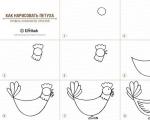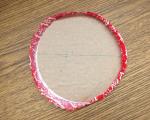Ear mites in dogs: home treatment, photos, preparations. Symptoms and treatment of ear mites in dogs
Ear mites in dogs are a highly contagious and rapidly developing disease. Primary diagnosis is based on primary symptoms. What are the features of home treatment, how to choose drops, ointments or sprays, how effective are folk remedies.
Note! The risk of an ear mite infection increases exponentially if your pet has been in contact with carrion.
Are ear mites transmitted from dogs to humans?
The ear mite requires certain conditions (humidity, temperature, amount of food) for life and reproduction. Are pet ear mites transmitted to humans? Usually, no ... but there are nuances.
Prevention of dog infestation with ear mites
The most reliable way to protect your pet from an extremely unpleasant, rapidly developing invasion is timely and regular prevention.
Read also: Tracheal collapse in a dog: basic information, treatment and rehabilitation rules
Diagnosis of the disease - symptoms and signs of ear mites in dogs
Diagnosis of an ear mite infestation is based on symptoms and signs that become apparent fairly quickly. However, there is a risk of confusing ear mite infestation with acute otitis media. How to make the correct diagnosis and choose the appropriate treatment?

Naturally, the most reliable option is to contact a veterinary clinic. To confirm the diagnosis, a number of procedures are performed:
To clarify the situation, several repeated scrapings are taken with a frequency of 1-2 days. The problem is that in the early stages of an infestation, the population of ear mites may be too small to detect.
Important! In dogs with shortened muzzles against the background of ear mite infection, conjunctivitis, rhinitis, breathing problems and other ailments that provoke swelling of the mucous membranes can be observed.
What does a tick look like and can you see it?
Without special equipment, you will not be able to find out what a tick looks like, or rather, you will not be able to see it in small details. At the stage when a brown mass has begun to accumulate in the dog's ear canals, the algorithm below will help confirm an ear mite infestation.
You will need a black piece of paper, a hygienic Q-tip, disposable gloves, a magnifying glass, and good lighting. The algorithm of actions is as follows:
- Gently hold the dog's head and take a sample of the earwax. You should try to capture as many brown secretions as possible at one time. If the first time did not work out, for the second attempt you need to use a clean cotton swab.
- Place the Q-tip containing the ear sample over the black paper and gently tap it with your finger.
- Examine the sheet carefully with a magnifying glass.
If very small white grains were found on the paper, these are ear mites. With a massive invasion, you may notice that the grains are moving. After confirming the diagnosis, be sure to destroy the paper and all hygiene items that have come into contact with the dog's ear secretions.
Read also: Do dogs have headaches? How not to miss dangerous symptoms
How to distinguish otitis media from ear mites?
If you do not have the opportunity to contact a veterinarian, it is important not to make a mistake in the diagnosis and prescribe adequate treatment. How to distinguish otitis media from ear mites in dogs? The task is really not easy, since both diseases cause significant discomfort in the pet, leading to constant scratching of the ears.
An exception is a sluggish form of otitis media, in which the dog experiences acute pain, but there is no discharge from the ears.
Home Treatment for Ear Mites in Dogs
If you diagnose an ear mite in a dog in time, the disease does not pose a threat to life. Usually, treatment is carried out at home. In the advanced stages of the disease, when there is a threat of outpouring of pus in the ear canals and perforation of the eardrum, it is more reasonable to treat the animal in a hospital setting.
When treating at home, it is important to follow a number of rules:
Important! Do not use antibiotics for ear mites unless prescribed by a veterinarian. Antibiotics only affect bacteria and microbes, so they are used only in case of infection of scratches and ear canals.
Drops
Drops must be used strictly according to the instructions. Carefully read the points of contraindications and the duration of the treatment course. Many drugs are contraindicated in puppies under the recommended age or weight.
In the treatment of ear mites, the following drugs are usually used:
- Otovedin.
- Amit Forte.
- Bars Forte.
- Otoferonol Gold.
- Acarostop (ProVet).
- Demos.
- Decta.
- Amitrazine or Amitrazine Plus.
- Oricin.
Ear mites are only visible when magnified under a microscope.
External signs and symptoms of ear mites in dogs
The dog has constant itching.
There is dry black discharge in the ears.
 A dog with otodectosis shakes its head, scratches its ears, rubs against objects.
A dog with otodectosis shakes its head, scratches its ears, rubs against objects.
Around the ears, you can find multiple scratches and sores.
The dog may be lethargic and refuse food.
The head is tilted towards the affected ear.
Otodectosis can be complicated by otitis media. The imposition of fungal microflora, brain damage, nervous disorders, deafness.
Treatment for ear mites in dogs
 If the disease is not complicated by anything, then it is quite simple.
If the disease is not complicated by anything, then it is quite simple.
Daily mechanical cleaning of the auricle is carried out. Acaricidal agents are prescribed. In some cases, antibiotic therapy, immunomodulators are necessary.
Despite the standard treatment regimen, drugs are selected individually by a veterinarian. Repeated scraping is given after a full course of treatment prescribed by a veterinarian. In order to prevent re-infection, it is necessary to treat rugs, beds, combs with special means. When there are several animals in the house, treatment and prevention should be carried out simultaneously

Prevention of otodectosis in dogs
In order to prevent the appearance of otodectosis in your pet, the following simple rules should be followed:
- observe hygiene measures;
- preventive examinations at the veterinarian;
- preventive treatment with acaricidal agents, for example, stronghold drops.
Ear scabies begins with mild itching, gradually increasing. The animal becomes restless, combs the ears with claws, injures them. Foci of alopecia, abscesses, sores are formed.
From the external auditory canals, fetid, purulent contents flow out, forming crusts when dried.
The symptom of crooked head is manifested by the inclination of the head to the sore ear and the sinking of the eyeball.

With the development of tick-borne otitis media, the following symptoms increase:
- The dog vigorously rubs his ear, the skin is slightly reddened.
- Increasing itching causes the animal to tear the organ of hearing. It becomes hot, bright red.
- A discharge of a mushy consistency of brownish-brown color is formed, consisting of exudate, dead mites, their excrement, ichor and micromycetes.
- A few days later, the symptoms of scabies spread to the other ear.
- Skin defects are seeded with secondary microflora. There is suppuration.
- Alteration extends to the medial ear and labyrinth. The tympanic membrane is perforated.
- The microflora penetrates to the meninges, meningitis or arachnoiditis develops.
- In case of unsuccessful treatment, or its absence, the disease ends with deafness or death of the animal.
Diagnostics
Microscopy of a scraping from the area of damage reveals a tick or an egg. The owner of the dog is able to independently identify itching. When a black sheet of paper with a slurry placed on it, which is released from the ear canal, is heated, ticks are observed to scatter.

Treatment
Treatment begins with determining the phase of the disease. With a dry consistency of ear secretions and the absence of scratching, acaricidal drops, gels, aerosols, ointments, lotions are used. It should be remembered that such drugs contain toxic substances, so the treatment must be carried out under the supervision of a veterinarian.
Running scabies is characterized by the development of otitis media. Anti-tick means are no longer enough, you have to use antimycotic medicines and antibiotics. Preparation of the ear for the use of drugs consists in cleaning it from secretions with cotton swabs. Medicines are applied to the prepared surface of both ears. The treatment is repeated according to the instructions or orders of the veterinarian.
The wounds become inflamed and fester. The larvae, feeding on suppuration products and lymphatic fluid, reach sexual maturity after 3-4 weeks, and then also lay eggs. In a short period of time, an ear mite can damage not only the skin of the dog's ear, but also the eardrum, and penetrate further into the inner ear and brain.
A healthy animal can "catch" an ear mite in the following ways:
- upon contact (even fleeting) with a carrier animal;
- through the care item used by the infected dog;
- from a person who was in contact with the affected representative;
- through fleas (they can carry tick larvae);
- from the mother (in puppyhood).
Which animals are at risk
It has been established that the ear mite most often “attacks” young dogs that have not reached six months. The disease is characterized by a severe course and the development of complications.
Ear mites symptoms
Other symptoms of ear mites:
- hyperemia of the skin of the ear canal;
- severe itching;
- swelling of the ear folds.
The dog is nervous, shakes his head, often itches. When combing and while shaking the ears, particles of the accumulated mass can fly out of the external auditory canal.
Photo of an ear mite
Diagnostics
Diagnosis of ear mites in dogs is not difficult: during the examination, the veterinarian will take material from the ear and look at it under a microscope. In the chronic form, bacterial culture of the contents of the auditory canal may be required to determine the sensitivity of the insect to medicinal substances and to select the optimal drug. In advanced cases, a specialist may prescribe an x-ray examination or computed tomography to identify the condition of the inner ear and meninges. Among the additional diagnostic procedures, it should be noted: bacterial analysis, scrapings, allergic tests.
Can you spot ear mites at home?
Important: at the initial stages of the development of pathology, the population may be small. Therefore, the likelihood that insects will be in the material taken is reduced.
Treatment
Medical therapy
The most popular drugs for ear mites in dogs are presented in the table.
Name
Release form
Active ingredient
Price, rub)
Application features
Definitely in both ears. Suitable for cats.
Ivermectin
Suitable for other animals
Otovedin
Phytocomplex
Used to clean the ear canal
Permethrin
In both ears
Diazinon
Has an anti-inflammatory effect
Cypermethrin, amitraz
Good for fleas and other insects
Acaromectin
Ivermectin
Amitraz, lidocaine, methyluracil
Has an analgesic and regenerating effect
Fipronil, lidocaine, chloramphenicol
Eliminates inflammation and pain.
Folk methods of treatment
Sometimes dog owners use folk remedies to rid their pet of ear mites. Compositions based on kerosene and vegetable oil, oil and iodine, strong tea are popular. Sometimes vegetable oil is mixed with garlic juice. This approach to the treatment of otodectosis cannot be considered correct. Firstly, such compounds, if they can help, then only at the very early stage of the development of the disease, when the number of ticks is low.
Secondly, garlic juice, kerosene, iodine have a strong irritating effect on the animal's skin. The application of these components to the damaged cover can lead to burns, and if penetrated into the inner ear, lead to complete deafness.
How to prepare a dog's ear for treatment
Before dripping drops from an ear mite, it is necessary to clean the pet's ears from the accumulated mass. If the dog resists (not all animals tolerate this procedure stoically, especially if they are in pain), it is best to do the procedure with two people. For small sizes, you can throw a blanket over it or wrap it in a towel. If the pet is large, a muzzle should be used.
In the process of cleaning, you must adhere to the following recommendations.
- You need to use sticks, not cotton swabs or discs, as there is a risk of pushing the accumulated mass deep into the ear canal.
- Cleaning should begin with areas located close to the edges of the ear, gradually moving deeper.
- The movements of the wand should be outward.
- If the masses are dry, you can wet the cotton end with peroxide or chlorhexidine. You can't put them in your ear.
- It is advisable to use lotions specially designed for this purpose for cleaning the ears.
- If long hair grows on the dog's ears, then it must be cut off for the period of treatment.
Why are ear mites dangerous in dogs?
The lack of treatment of ear mites in dogs leads to the development of complications:
- blockage of the ear canal;
- accession of a secondary infection;
- inflammation of the middle and inner ear;
- damage to the eardrum;
- deafness;
- mental disorders;
- the transition of the inflammatory process to the brain;
- death of a pet.
Can a person get ear mites from a dog?
Maybe. Although rare, cases of development of otodectosis in humans also occur. The symptoms of the disease are the same: itching, inflammation, swelling of the ear canal, accumulation of waste products of insects.
Prevention
It is impossible to completely prevent an ear mite infestation in your pet. However, with the help of preventive measures, you can reduce the likelihood of developing the disease. For this you need:
- avoid contact of the dog with unfamiliar relatives;
- periodically carefully examine the animal;
- if you find brown plaque in your four-legged friend's ears, visit the clinic as soon as possible and undergo an examination;
- periodically carry out preventive cleaning with special preparations, which are selected together with a veterinarian, taking into account contraindications and other nuances.
The disease has a favorable prognosis, provided timely detection and proper treatment. At the very beginning of the development of otodectosis, it happens that the ear mite disappears after one procedure of cleansing and using the drug. In advanced cases, you need to be patient, follow the rules of hygiene of the pet's ears, adhere to the therapy regimen, and increase the dog's immunity.
The surfaces affected by the mite are compacted and covered with dried crusts. I must say, the disease looks unpleasant and, having seen the formations in the pet's ears, the owners most often think that his ears are just dirty. In fact, this is far from the case.
As already noted, tick saliva is an allergen for an animal, but not only it is toxic, but also all other products of its vital activity. Getting on the skin and in its inner layers, they lead to the appearance of microscopic tears, provoking itching in the dog. The pet constantly scratches and shakes its ears. Scratches and wounds appear in the auricles and on the outside of the ear. Earwax mixes with lymph, mite feces and forms brown crusts.
In addition, a number of other symptoms are added:
- the dog begins to eat poorly, sometimes at all;
- the pet does not sit still, behaves restlessly;
- with a severe lesion, the dog may constantly tilt its head towards the affected ear.
In the clinic, the resulting material is studied under a microscope. If this is indeed a tick, then you can see the moving tiny gray-white specks.
Consequences of running otodectosis
A tick bite is not only an unpleasant feeling for a dog, but also a possible cause of various kinds of complications. If the pet is not treated, then this can lead to the following consequences:
- festering wounds formed;
- the development of an inflammatory process in the ear -;
- damage and further destruction of the eardrum;
- reduction or complete loss of hearing;
- inflammation of the membranes of the brain and spinal cord - meningitis.
Statistics indicate that complications develop in one out of ten cases of otodectosis. Naturally, this is not a reason to panic, but a warning - a sick animal must be cured in a timely manner.
Treatment for ear mites in dogs
There are many reasons why you should not, without experience, engage in self-treatment of a four-legged friend:
- Only a specialist after a comprehensive diagnosis can confirm that the pet has otodectosis.
- When choosing a drug, the doctor takes into account the individual characteristics of the dog (breed, tendency to allergic manifestations, neglect of the disease) and prescribes the optimal remedy.
- An experienced veterinarian will be able to calculate the required dosage, as well as the duration of the course.
Before applying external agents, it is imperative to clean the ears from accumulated sulfur, leaked exudate, and crusts. To do this, you can wrap a piece of gauze or bandage around your index finger and wipe the inside of the sink. The bandage can be moistened with a solution of boric acid, furacilin or hydrogen peroxide. In the latter case, it is necessary to prevent the drug from draining into the ear.
You can supplement the procedure by applying vegetable oil to the baked crusts or treat them with freshly brewed tea leaves. To do this, it is convenient to use cotton swabs and change them as often as possible.
For the same purposes, special lotions can be purchased at a veterinary pharmacy, for example, Epi-otic or Otodin, which will facilitate the removal of crusts, eliminate an unpleasant odor, and besides, they have a pronounced antipruritic effect. They can also be used as a preventive measure.
For the treatment of ear mites in dogs, drugs are usually prescribed in the form of drops. It is necessary to bury in both ears, strictly considering the prescribed dosage.
Among the known ear drops from otodectosis in dogs, the following can be noted:
- "Amitrizan Plus";
- "Otovedin";
- "Surolan";
- "Otibiovin";
- "Tzipam";
- "Aurikan";
- "Leopard".
For external treatment, a veterinarian may prescribe ointments:
- "Oridermil";
- "Amidel-gel";
- "Sulfuric ointment";
- "Colloidal sulfur";
- "Aversectin ointment";
- "Liniment balsamic according to Wisniewski".
Ointments must be warmed to room temperature, applied to the affected area with light massaging movements so that the medicine penetrates into the deeper layers of the epidermis.
If, after the therapeutic course, the subcutaneous tick reappeared, it means that we are talking about incorrect or insufficient treatment, or the dog has reduced immunity.
Preventive measures for ear mites
If brownish sulfur begins to form, it means that the animal has become infected with an ear mite.
Like most diseases, otodectosis is very easily cured at the very beginning of development. At this stage, regular cleaning of the ears and the use of special drops will help rid the pet of the disease.
If it was not possible to identify the subcutaneous tick, and it caused significant damage to the dog, then it will be necessary to treat not only otodectosis, but also the secondary infection that has joined. This will require more effort and time.



